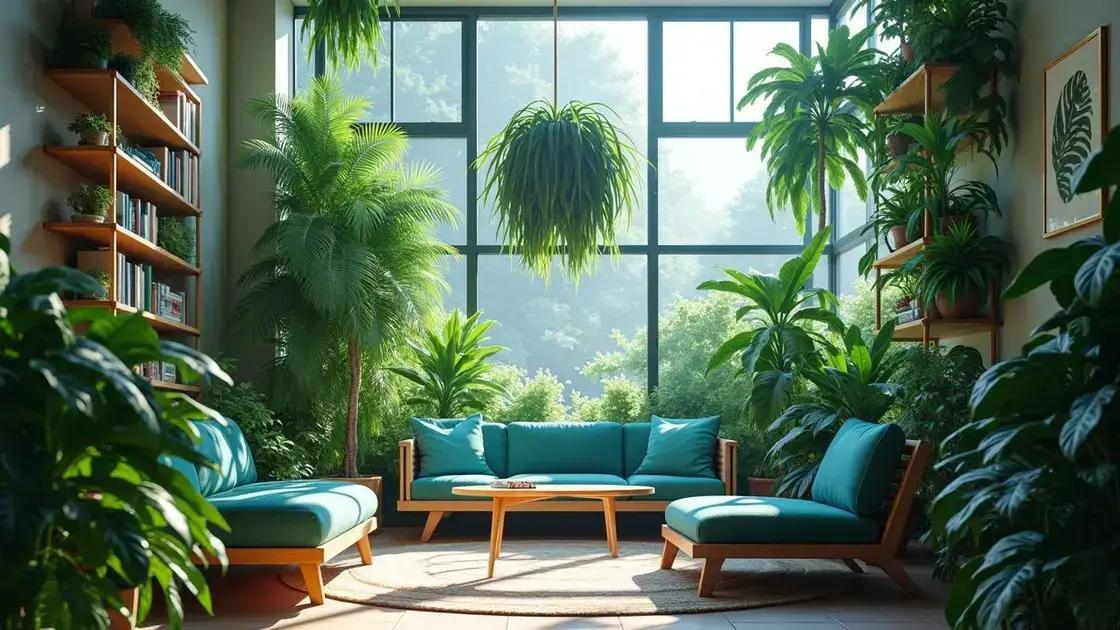How to Take Care of Indoor Palm Plants: 5 Simple Tips for Thriving Greens
How to take care of indoor palm plants is a question many indoor gardening enthusiasts ponder. It’s not just about watering; it involves understanding their natural habitat, light preferences, and more. Grab your gardening gloves as we dive into essential practices that can transform your indoor space into a tropical paradise.
Table of Contents
ToggleEssential watering tips for indoor palm plants
How to take care of indoor palm plants effectively begins with understanding their watering needs. These plants thrive in moist but not soggy conditions, making it crucial to establish a consistent watering routine. Too much water can lead to root rot, while too little can cause the leaves to droop. Here are some essential tips to ensure your palm plants receive just the right amount of hydration.
Understanding palm plant watering needs
- Type of palm: Different palm species have varying watering requirements.
- Soil moisture: Always check the soil before watering.
- Seasonal changes: Adjust watering frequency based on indoor temperature and humidity.
How to check soil moisture
- Insert your finger about an inch into the soil.
- If it feels dry, it’s time to water.
- If it feels moist, wait a few more days.
Signs your plant needs water
Being able to recognize when your palm is thirsty can prevent long-term damage:
- Drooping leaves
- Brown leaf tips
- Yellowing fronds
Best practices for watering
Following a structured approach will help keep your indoor palm plants healthy:
- Water early in the morning for maximum absorption.
- Use room-temperature water to avoid shocking the roots.
- Ensure pots have drainage holes to prevent waterlogging.
In addition to these tips, exploring indoor gardening techniques is a great way to broaden your knowledge. You can learn more about indoor plant care by visiting this helpful resource.
Wrapping up watering tips
With these essential watering tips for indoor palm plants, you can create a thriving environment where your palms can flourish. Always remember to monitor the moisture levels in the soil and adjust your watering practices accordingly for the best results.
Choosing the right light for your palm

Choosing the right light for your palm plants is crucial for their health and growth. Palm plants can flourish under the correct lighting conditions, ensuring they remain vibrant and lush. The level and type of light directly impact their overall wellbeing. Let’s explore how you can provide the optimal light for your indoor palms.
Types of light for palm plants
- Indirect sunlight: Most palm plants thrive in bright, indirect sunlight, which mimics their natural habitat.
- Low light: Some palms can adapt to lower light conditions but may grow more slowly.
- Artificial light: Using grow lights can supplement natural light, especially during the darker months.
Signs your palm may need more light
Recognizing the warning signs that your palm plant isn’t receiving enough light is essential:
- Stretched or leggy growth
- Yellowing leaves
- Pale fronds or overall diminished color
Ideal placement for your palm plants
Choosing the right location for your palms is key to their success. Consider the following:
- Near a window with filtered light.
- Avoid direct afternoon sun, which can scorch their leaves.
- Rotate your palms occasionally to promote even growth.
Light requirements for different palm varieties
| Type of Palm | Light Preference |
|---|---|
| Areca Palm | Bright, indirect light |
| Parlor Palm | Low to medium light |
| Chinese Fan Palm | Bright, indirect light |
Providing the right amount of light is essential for maintaining healthy palms. If you’re interested in further enhancing your indoor gardening skills, be sure to check out this useful guide.
By understanding and implementing these techniques for choosing the right light for your palm plants, you can create a thriving indoor environment that supports their lush growth.
Common indoor palm issues and their solutions
Common indoor palm issues and their solutions are essential knowledge for any palm owner. While these plants are generally hardy, they can face various problems if not cared for properly. Identifying these issues early on can help maintain the health and beauty of your indoor palms.
Identifying common issues with indoor palms
- Yellowing leaves: Often a sign of overwatering or nutrient deficiency.
- Brown leaf tips: Usually caused by low humidity or underwatering.
- Pests such as spider mites or mealybugs: Can sap vitality from your plants.
Solutions for yellowing leaves
When addressing yellowing leaves, consider the following steps:
- Check soil moisture; water only when the top inch is dry.
- Fertilize with a balanced houseplant fertilizer to replenish nutrients.
- Ensure proper drainage to avoid root rot.
Fixing brown leaf tips
For brown leaf tips, the following methods can help:
- Increase humidity around the plant using a humidifier or pebble trays.
- Water more frequently but ensure that the soil doesn’t remain soggy.
- Trim dead tips to encourage new growth.
Dealing with pest infestations
To combat pests effectively:
- Inspect your plants regularly for early signs of infestation.
- Use neem oil or insecticidal soap to treat affected areas.
- Quarantine new plants to prevent spreading pests to existing palms.
Understanding these common indoor palm issues and their solutions can significantly improve your plant care experience. For further insights, consider exploring indoor gardening techniques.
By following these tips, you’ll ensure your indoor palm remains healthy and vibrant through various challenges.
In conclusion
Caring for indoor palm plants requires attention to detail, particularly when it comes to watering, lighting, and addressing common issues. By implementing the tips discussed in this guide, you can foster a thriving environment for your palms. Remember to check the moisture levels, position them in suitable light, and keep an eye out for pests. For more insights and tips on enhancing your indoor garden, continue exploring great resources and community advice to support your indoor gardening journey.

